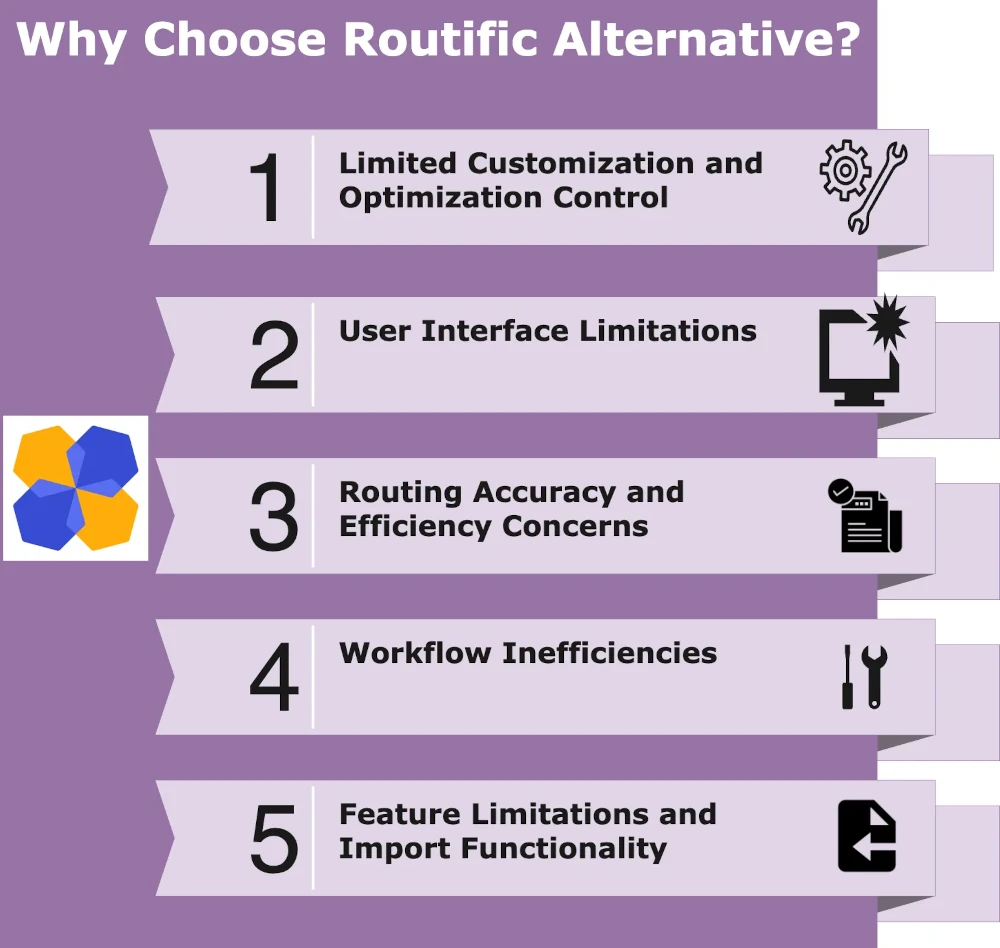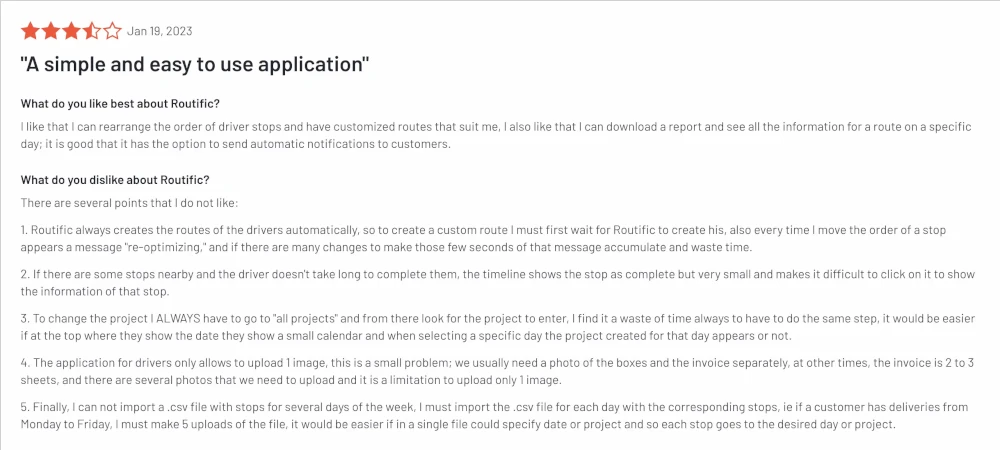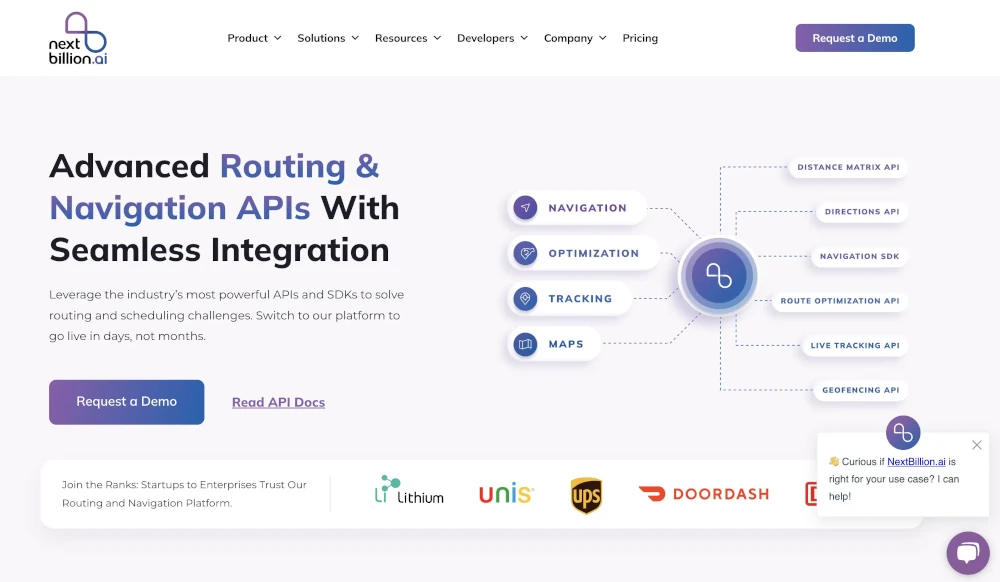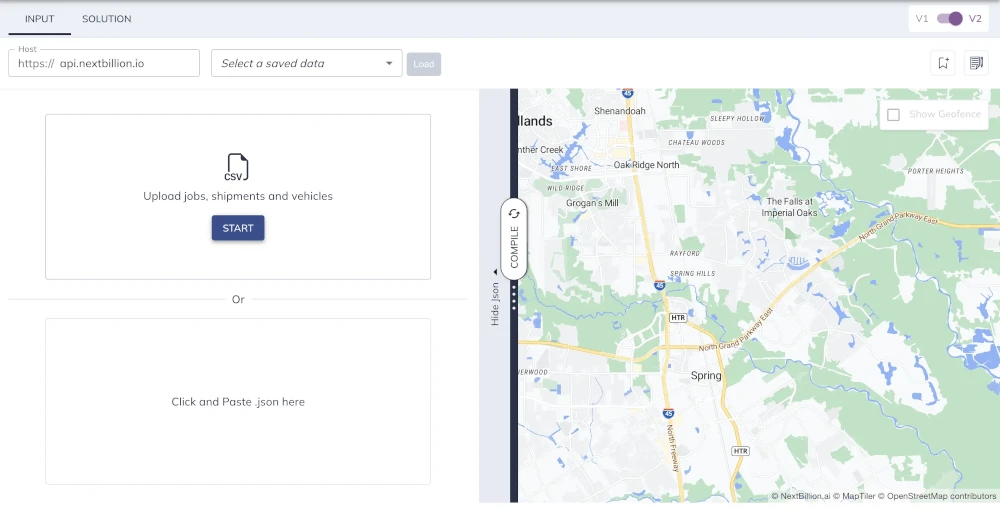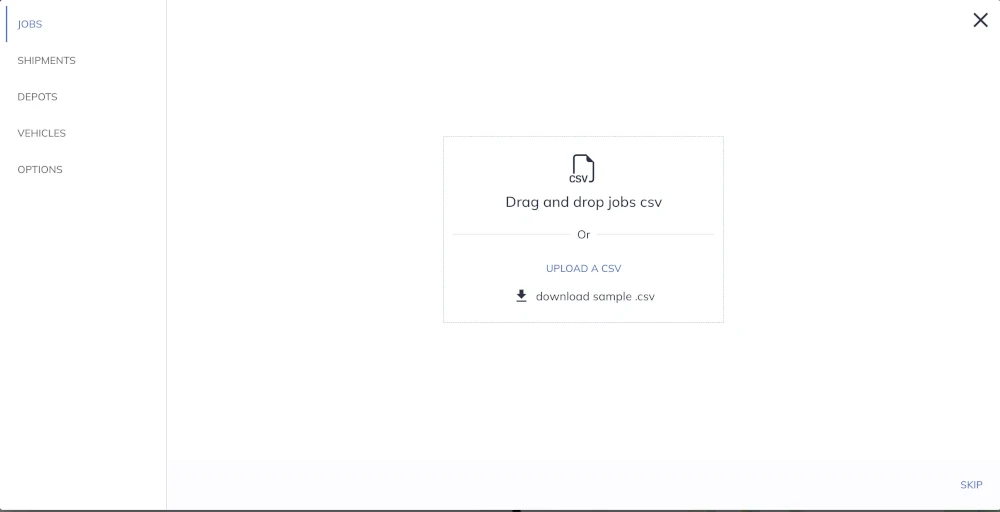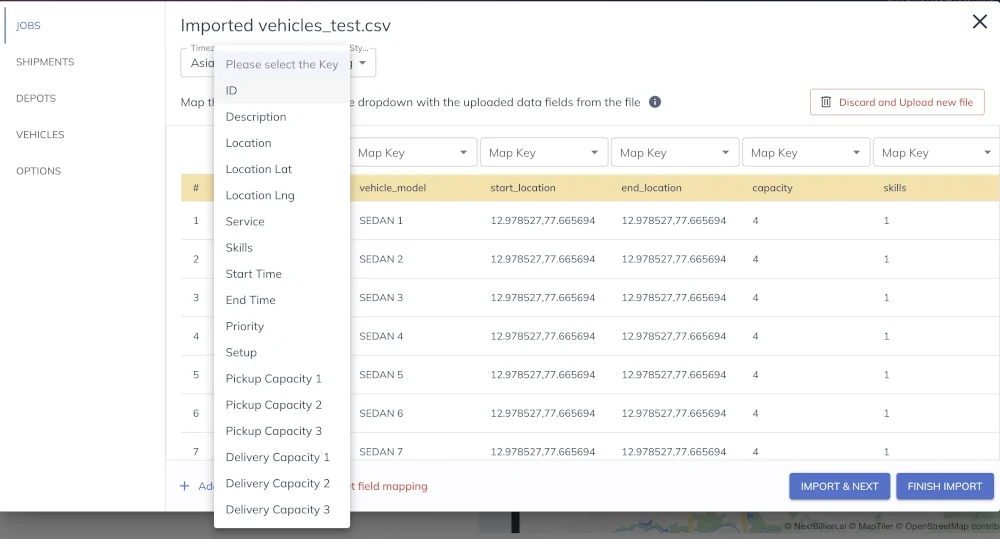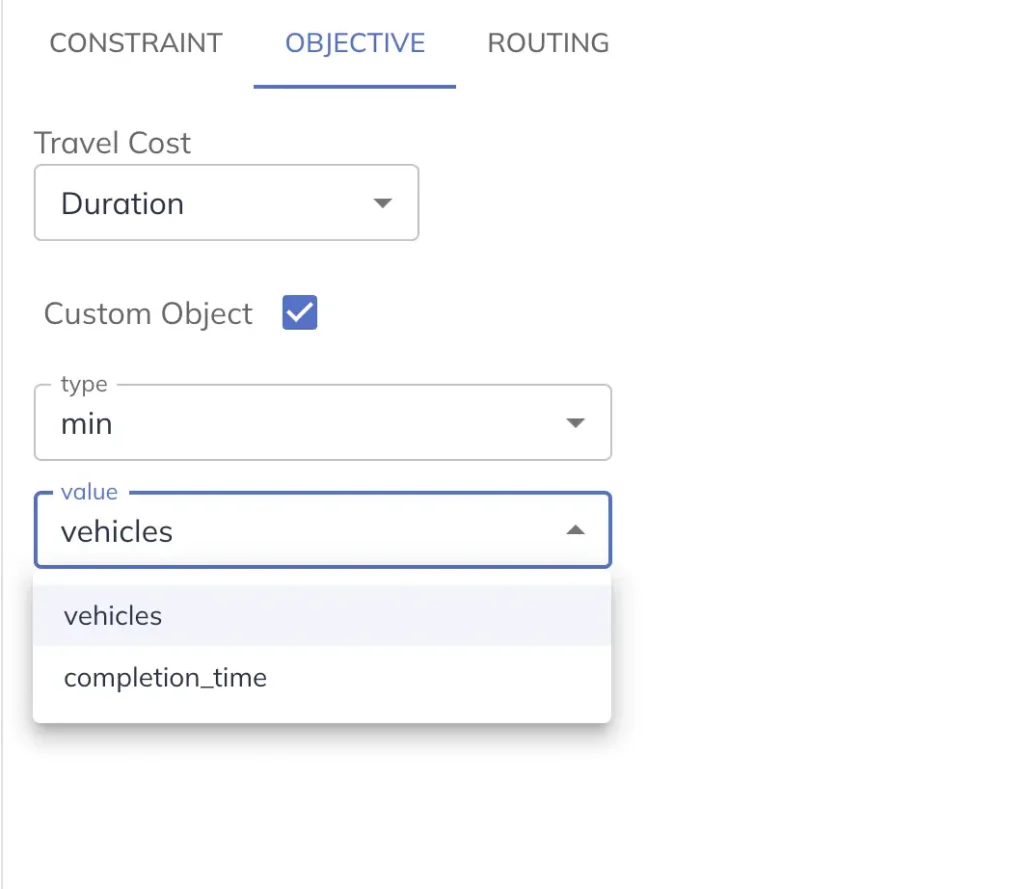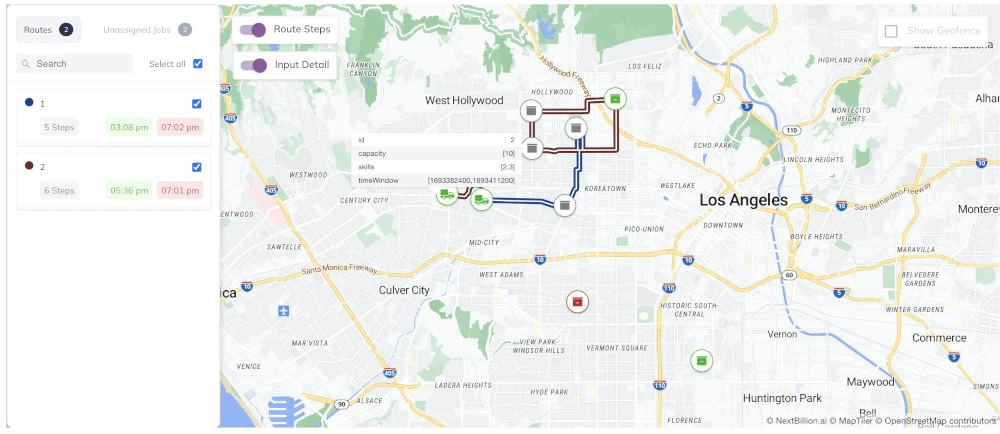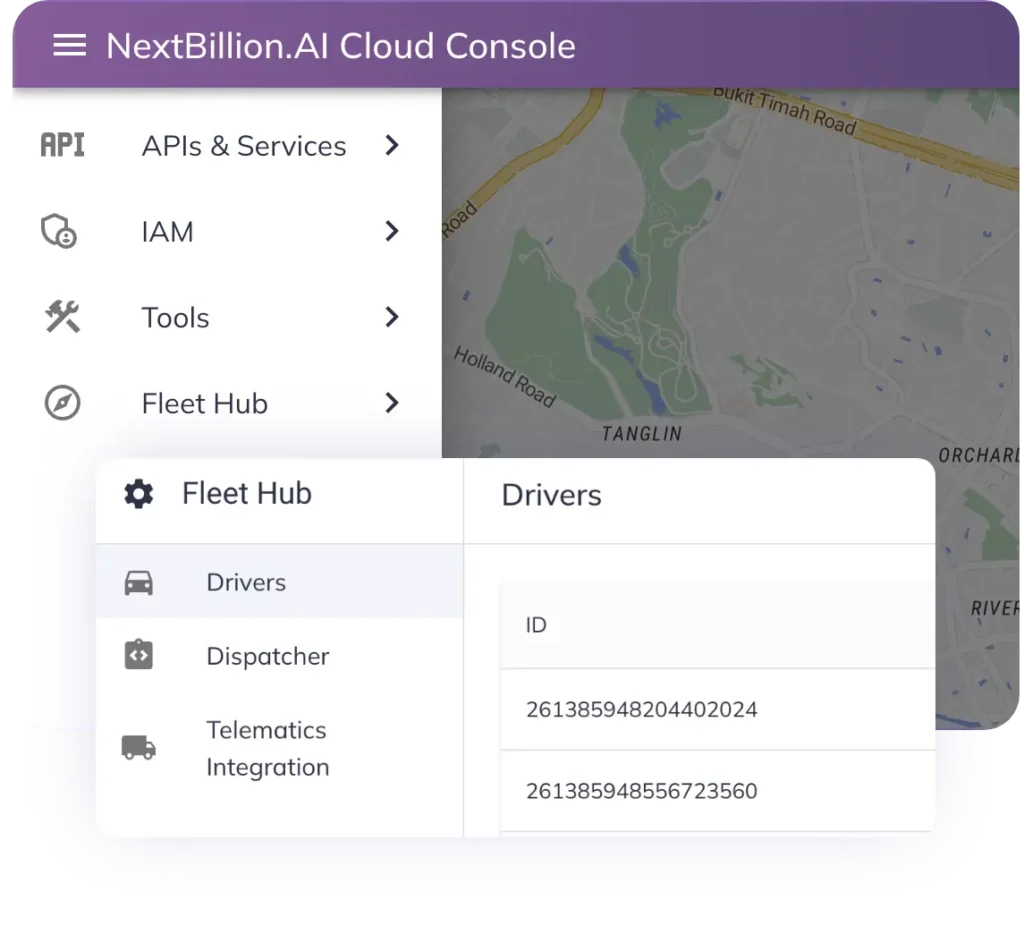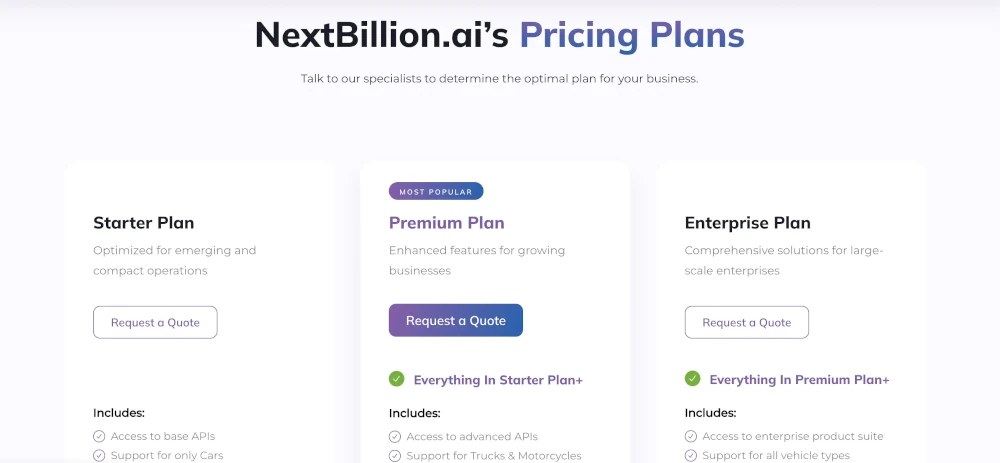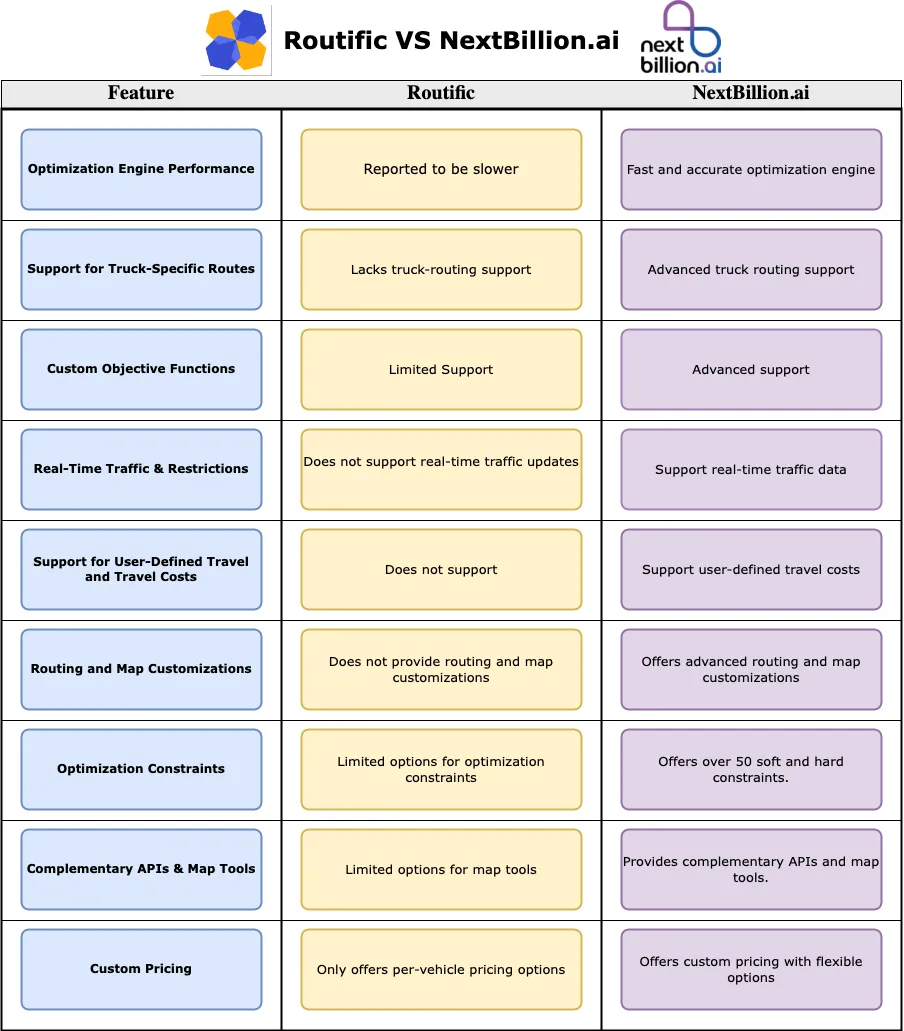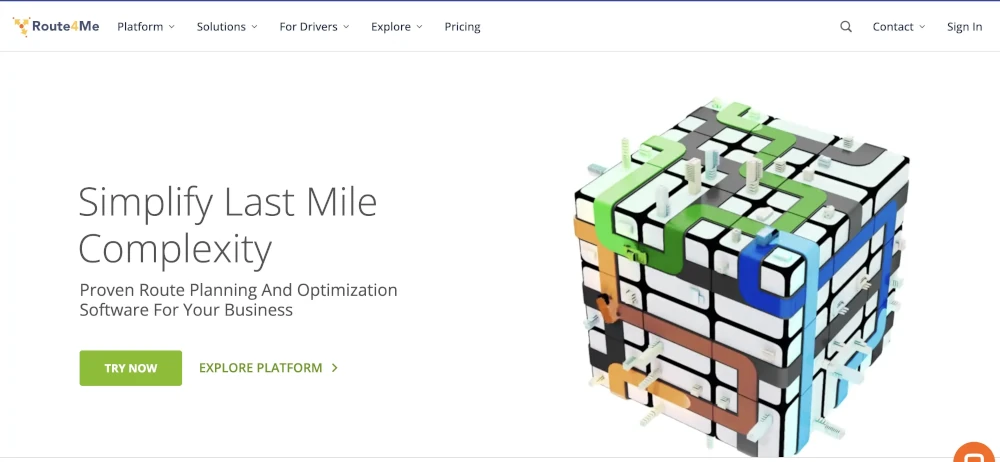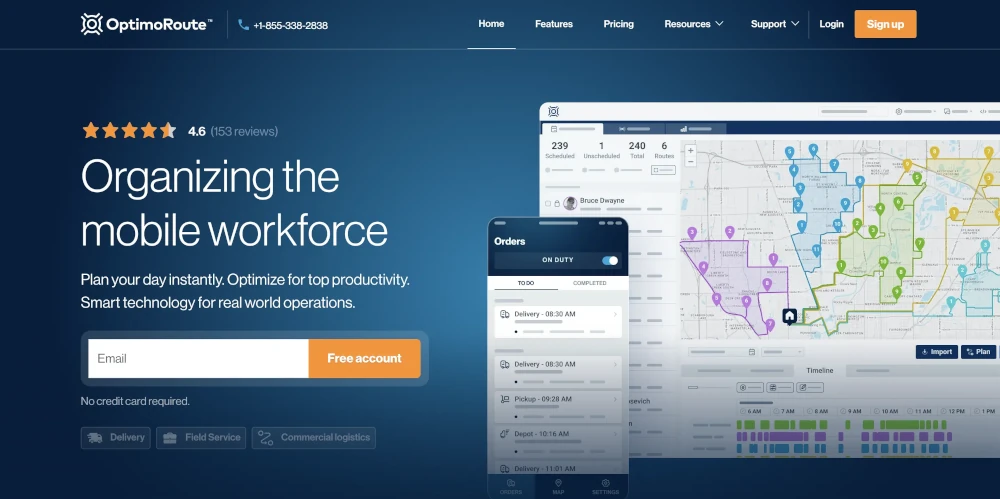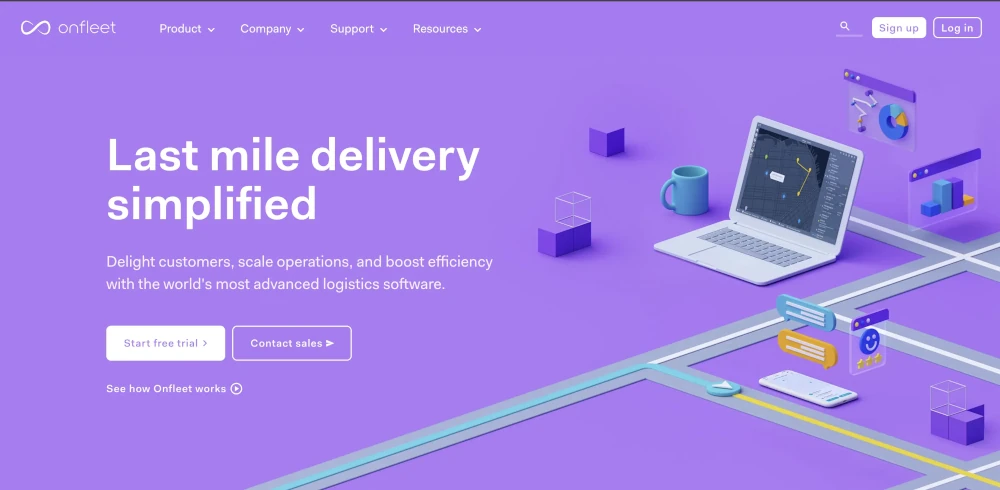Routific is a well-known solution for route planning and optimization. It offers a range of valuable features, including mileage tracking, one-click dispatch to drivers, proof of delivery, and more. Although Routific offers a comprehensive range of features, users often encounter various challenges, which leads them to look for Routific alternatives.
This article will explore various alternatives to Routific and compare the top options available, including their respective pricing details. These alternatives provide cutting-edge features, advanced algorithms, and intuitive interfaces that can completely transform your approach to planning delivery routes.
Why should you consider exploring Routific alternatives?
Despite Routific’s features, certain shortcomings prompt users to seek alternative options. Based on the reviews collected from G2, several recurring themes might prompt users to consider Routific alternatives:
1. Limited Customization and Optimization Control
Users expressed frustration with Routific’s automatic route optimization, particularly when accommodating specific constraints, such as the number of items that fit in a vehicle or the need for custom routes. The lack of flexibility in manually adjusting routes or specifying preferences for optimization could be a significant drawback for businesses with unique logistical requirements.
2. User Interface Limitations
Some users highlight shortcomings in Routific’s user interface, particularly regarding input formats and visualization of route data. Requests for features like support for latitude and longitude coordinates as inputs indicate a need for more versatile and user-friendly interface options to enhance usability and efficiency.
3. Routing Accuracy and Efficiency Concerns
Users report issues with routing accuracy, especially in scenarios involving clustered stops or multiple drivers servicing the same area. Inefficient route planning, such as sending multiple drivers to the same street or building, can lead to suboptimal resource utilization and potentially increase operational costs.
4. Workflow Inefficiencies
Users expressed frustration with certain workflow inefficiencies within Routific, such as the need to wait for route re-optimization after making changes or difficulties in accessing specific stop information within the timeline view. These issues contribute to a sense of wasted time and effort, detracting from the overall user experience.
5. Feature Limitations and Import Functionality
Several users cite limitations in Routific’s feature set, such as restrictions on the number of images uploaded in the driver app or the inability to import CSV files that stop for multiple days in a single upload. These limitations hinder productivity and flexibility, particularly for users with diverse or complex delivery schedules.
Due to these challenges and limitations, businesses may want to explore alternative delivery management solutions that offer greater customization, efficiency, and usability to meet their specific needs and preferences better.
What are the Best Routific Alternatives?
Many users are looking for alternatives to Routific due to the above reasons. These are the 5 best Routific alternatives.
- NextBillion.ai Route Planner Tool
- Upper
- Route4me
- OptimoRoute
- OnFleet
NextBillion.ai‘s Route Planner Tool offers a comprehensive solution for optimizing routes and enhancing operational efficiency. The Route Planner Tool from NextBillion.ai is noteworthy for its exceptional route optimization capabilities and ability to integrate with telematics and cloud services seamlessly. It improves your operational efficiency in the following ways:
Key Features of Route Planner Tool
Feature 1: Dynamic Constraints Configuration
NextBillion.ai’s Route Planner Tool allows users to tailor the route optimization process to meet their unique business needs by adjusting constraints. Constraints play a crucial role in route planning and optimization algorithms, as they ensure that the generated route plans align with the operational limitations set by the user.
The Route Planner Tool is equipped to handle various constraints, such as overtime, lateness, and wait time. These constraints are crucial factors for businesses that handle fleets or logistics operations, as they directly impact aspects like labor costs, customer satisfaction, and overall operational efficiency.
Consider a scenario where a delivery company wants to reduce overtime expenses while still ensuring on-time deliveries. In this scenario, the company has the option to establish a restriction on overtime through the Route Planner Tool.
This allows them to define the maximum number of overtime hours that drivers are permitted to work. Additionally, you have the option to configure constraints for lateness and wait time in order to minimize delays and optimize resource utilization.
Using this feature is easy. Before starting the optimization process, users can easily enter their desired constraints into the user-friendly interface of the Route Planner Tool.
The interface has been carefully designed to ensure users can easily navigate and specify constraints precisely and clearly. After defining the constraints, users can easily run the optimization tool. This tool utilizes advanced algorithms to generate route plans that adhere to the specified constraints.
Why is Dynamic Constraints Configuration Important?
Configuring dynamic constraints within NextBillion.ai’s Optimization Tester Tool offers several benefits to businesses.
By customizing constraints such as overtime, lateness, and wait time, organizations can ensure that route plans are optimized to meet specific operational requirements and constraints.
For instance, by setting limits on overtime or wait time, businesses can minimize labor costs and enhance driver satisfaction by promoting efficient work schedules.
Additionally, the flexibility to adjust constraints in real-time allows businesses to adapt to changing circumstances, such as unexpected traffic delays or fluctuations in demand.
This feature is crucial for maintaining operational efficiency and ensuring that route plans remain optimized under varying conditions. It ultimately leads to cost savings, improved resource utilization, and enhanced customer service.
Feature 2: Multi-Objective Optimization
Traditional route planning tools often prioritize a single objective, such as finding the shortest or fastest route between two points. While this approach can be effective in certain scenarios, it may overlook other important considerations that impact overall operational efficiency and cost-effectiveness.
In contrast, NextBillion.ai’s Route Planner Tool introduces multi-objective optimization, allowing users to simultaneously consider and balance multiple business objectives when generating route plans.
The Route Planner Tool enables users to set preferences for route optimization based on a range of factors, including but not limited to:
- Minimizing travel time: Ensuring timely deliveries and efficient use of driver hours.
- Reducing fuel consumption: Optimizing routes to minimize fuel usage and lower operational costs.
- Maximizing vehicle utilization: Balancing workload distribution to utilize available fleet capacity and minimize idle time.
Users can specify their desired objectives through the tool’s user-friendly interface, selecting the relevant criteria and assigning weights to prioritize each objective. For instance, a company may assign a higher weight to minimize travel time while considering the importance of reducing fuel consumption and maximizing vehicle utilization.
Once the objectives are defined, the Route Planner Tool leverages advanced algorithms to generate route plans that optimize across multiple objectives simultaneously. This means that the generated routes not only satisfy individual objectives but also strike a balance between competing priorities to achieve the most optimal overall solution.
What is the Importance of Multi-Objective Optimization Feature?
The ability to perform multi-objective optimization within NextBillion.ai’s Route Planner Tool gives businesses a competitive edge by balancing competing priorities and achieving comprehensive route plans.
By considering multiple objectives simultaneously, such as minimizing travel time, reducing fuel consumption, and maximizing vehicle utilization, organizations can optimize routes that align with their broader business goals.
For example, a company may prioritize minimizing travel time to improve delivery speed while also aiming to reduce fuel costs and environmental impact.
By leveraging multi-objective optimization, businesses can make informed decisions that balance efficiency, cost-effectiveness, and sustainability.
This feature enables organizations to maximize the value derived from their route planning efforts, leading to increased operational efficiency, reduced costs, and enhanced market competitiveness.
Feature 3: Seamless Integration with Fleet Hub
NextBillion.ai’s Route Planner Tool offers seamless integration with Fleet Hub, a centralized platform designed to streamline fleet management operations and enhance communication between dispatchers and drivers. This integration provides users with a comprehensive solution for managing their fleet operations and optimizing route planning processes.
The integration with Fleet Hub enables users to perform the following key functions:
- Centralized Fleet Management: The Fleet Hub is a centralized hub for managing all aspects of fleet operations, including route planning, dispatching, and driver communication. Users can access Fleet Hub through NextBillion.ai’s Route Planner Tool, providing a single interface for managing their entire fleet.
- Integration with Third-Party TMS Platforms: Fleet Hub supports integration with third-party Transportation Management System (TMS) platforms such as Netradyne and Samsara. This integration allows users to seamlessly connect their existing TMS platforms with NextBillion.ai’s Route Planner Tool, ensuring compatibility and interoperability across systems.
- Importing Drivers: Users can easily import driver information and details into Fleet Hub, streamlining the process of managing driver assignments and schedules. This feature eliminates the need for manual data entry and ensures that driver information is up-to-date and accurate.
- Dispatching Optimized Routes: One of the key functionalities of Fleet Hub is the ability to dispatch optimized routes directly to driver applications. Once route plans are generated using NextBillion.ai’s Route Planner Tool, dispatchers can seamlessly send them to drivers’ mobile devices, allowing them to access and navigate the planned routes in real-time.
What are the Benefits of Integration with Fleet Hub?
The integration of NextBillion.ai’s Route Planner Tool and Fleet Hub simplifies fleet management processes, providing multiple advantages for businesses.
- Improved Efficiency: By centralizing fleet management operations and integrating with third-party TMS platforms, users can streamline their workflows and eliminate manual processes, improving efficiency and productivity.
- Enhanced Communication: Fleet Hub facilitates seamless communication between dispatchers and drivers, ensuring that route plans are communicated effectively and drivers have the information they need to complete their assignments efficiently.
- Real-Time Visibility: By dispatching optimized routes directly to driver applications, dispatchers can gain real-time visibility into each route’s status and monitor driver progress throughout the day.
- Scalability and Flexibility: The integration with Fleet Hub provides users with a scalable and flexible solution that can adapt to the changing needs of their fleet operations. Whether managing a small or large enterprise fleet, users can leverage Fleet Hub to optimize their route planning processes and improve overall operational performance.
Overall, the seamless integration with Fleet Hub enhances the functionality and usability of NextBillion.ai’s Route Planner Tool, providing users with a comprehensive solution for optimizing their fleet operations and improving efficiency and productivity.
NextBillion.ai’s Pricing
NextBillion.ai offers flexible pricing plans tailored to meet the diverse needs of businesses across different scales of operations. Here’s an overview of the pricing plans available:
1. Starter Plan
- Optimized for emerging and compact operations, the Starter Plan provides essential features at an affordable price point.
- This plan includes access to base APIs and car support, email support and access to community resources.
- Key features of the Starter Plan cover access to base APIs such as Directions & Distance Matrix, Route Optimization Fast, Live Tracking API & SDK, and Geofencing.
2. Premium Plan
- The Premium Plan offers additional functionalities ideal for growing businesses requiring enhanced features and support for a wider range of vehicles.
- In addition to everything included in the Starter Plan, the Premium Plan provides access to advanced APIs and support for trucks and motorcycles.
- Premium support is also included in this plan to ensure timely assistance and resolution of any issues that may arise.
- Advanced APIs available with the Premium Plan are Route Optimization Flexible, Truck Routing & Navigation, Navigation API & SDK, and Isochrones & Clustering.
3. Enterprise Plan
- Tailored for large-scale enterprises with complex operational requirements, the Enterprise Plan offers comprehensive solutions and dedicated support.
- Building upon the features of the Premium Plan, the Enterprise Plan includes access to the full enterprise product suite and support for all vehicle types.
- A dedicated Solutions Engineer is provided to offer personalized assistance and guidance in implementing the solution effectively.
- White Glove Onboarding Support ensures a smooth transition and maximizes the value derived from the platform.
- Enterprise products with this plan include AI-powered ETAs, Road Editor, Custom Map data, and Custom Vehicle profiles.
NextBillion.ai understands that every business is unique, and the pricing plans are designed to offer flexibility and scalability to meet specific needs. Businesses are encouraged to contact NextBillion.ai specialists to discuss their requirements and determine the optimal plan for their operations.
NextBillion.ai VS Routific
When comparing NextBillion.ai with Routific, it’s evident that both platforms offer route optimization solutions, but there are notable differences in their features and capabilities:
The following table summarizes the comparison between NextBillion.ai and Routific.
1. Optimization Engine Performance
- NextBillion.ai boasts a fast and accurate optimization engine, ensuring efficient route planning.
- Routific’s optimization engine, on the other hand, is reported to be slower, potentially impacting operational efficiency.
2. Support for Truck-Specific Routes
- NextBillion.ai provides advanced support for truck-specific routes, catering to the needs of businesses with diverse vehicle types and requirements.
- Routific lacks support for truck-specific routes, limiting its applicability in certain industries.
3. Custom Objective Functions
- NextBillion.ai offers advanced support for custom objective functions, allowing businesses to tailor optimization algorithms to specific metrics and goals.
- Routific has limited support for custom objective functions, potentially restricting the flexibility of route optimization.
4. Real-Time Traffic & Restrictions
- NextBillion.ai dynamically calculates and updates routes based on real-time traffic conditions and restrictions, ensuring optimal efficiency.
- Routific does not support real-time traffic and restrictions, which may lead to less accurate route planning.
5. Support for User-Defined Travel and Travel Costs
- NextBillion.ai provides advanced support for user-defined travel and travel costs, allowing businesses to incorporate custom parameters into the optimization process.
- Routific does not offer support for user-defined travel and travel costs, limiting its flexibility in addressing specific business needs.
6. Routing and Map Customizations
- NextBillion.ai offers advanced routing and map customizations, empowering businesses to tailor the visualization and presentation of route plans according to their preferences.
- Routific does not provide routing and map customizations, potentially limiting the user experience and flexibility.
7. Optimization Constraints
- NextBillion.ai offers advanced optimization constraints, including over 50 hard and soft constraints, enabling businesses to fine-tune route plans according to various operational requirements.
- Routific has limited options for optimization constraints, potentially restricting the granularity of route optimization.
8. Complementary APIs & Map Tools
- NextBillion.ai provides complementary APIs and map tools for end-to-end workflows, offering additional functionalities beyond route optimization.
- Routific has limited options for complementary APIs and map tools, potentially limiting its integration capabilities.
9. Custom Pricing
- NextBillion.ai offers custom pricing with flexible options based on tasks, assets, or API calls, allowing businesses to choose a pricing model that best suits their needs.
- Routific only offers per-vehicle pricing options, potentially limiting flexibility for businesses with diverse requirements.
While both NextBillion.ai and Routific offer route optimization solutions, NextBillion.ai stands out with its fast and accurate optimization engine, advanced support for truck-specific routes, custom objective functions, real-time traffic updates, and flexible pricing options. Businesses seeking comprehensive route optimization capabilities and tailored solutions may find NextBillion.ai to be the preferred choice.
NextBillion.ai’s Route Planner Tool Pros and Cons
✅ Fast and Accurate Optimization: NextBillion.ai’s Route Planner Tool utilizes a powerful optimization engine, ensuring fast and accurate route planning even for complex scenarios.
✅ Advanced Support for Truck-Specific Routes: Businesses with diverse vehicle types can benefit from NextBillion.ai’s advanced support for truck-specific routes, optimizing routes according to specific vehicle requirements.
✅Custom Objective Functions: The tool offers advanced support for custom objective functions, allowing businesses to tailor optimization algorithms to specific metrics and goals.
✅Complementary APIs and Map Tools: NextBillion.ai provides complementary APIs and map tools for end-to-end workflows, offering additional functionalities beyond route optimization to enhance overall operational efficiency.
❌Geocoding Limitations: The route planner tool lacks direct geocoding capabilities for addresses. Instead, users must input location coordinates, which might prove cumbersome, particularly for non-tech-savvy individuals.
❌Limited Driving Modes: NextBillion.ai’s route planner tool currently restricts support to car and truck driving modes exclusively. Consequently, it does not accommodate other transportation modes like bikes or multi-mode transportation.
Ready to optimize your delivery routes?
2. Upper
Upper is a platform designed to streamline fleet management and optimize delivery operations for businesses of all sizes.
Who is it for?
Upper caters to a diverse range of industries and businesses, including logistics companies, e-commerce retailers, food delivery services, and field service providers. It’s ideal for organizations seeking to enhance efficiency, reduce costs, and improve customer satisfaction through optimized fleet management and delivery routing.
Upper Features
- Route Optimization: Upper offers advanced route optimization capabilities, allowing businesses to generate the most efficient delivery routes based on factors such as vehicle capacity, delivery windows, traffic conditions, and more.
- Real-Time Tracking: With Upper, businesses can track their fleet vehicles in real-time using GPS technology. This provides visibility into the location and status of each vehicle, enabling dispatchers to monitor progress, respond to incidents promptly, and provide accurate ETAs to customers.
- Delivery Scheduling: Upper allows businesses to schedule and manage delivery tasks efficiently. Dispatchers can assign tasks to drivers, set delivery priorities, and optimize schedules to meet customer demands while minimizing delays and idle time.
- Driver Management: The platform includes tools for managing drivers, including driver performance monitoring, task assignment, and communication features. This ensures that drivers stay on track, adhere to schedules, and maintain high service standards.
Upper Pricing
Upper offers flexible pricing plans tailored to the needs of businesses of all sizes. Here’s a breakdown of the available plans:
- Essential: The Essential plan is priced at $100 per month and accommodates up to 3 users with a capacity for up to 250 deliveries.
- Growth: For businesses requiring more extensive capabilities, the Growth plan is available at $200 per month, accommodating up to 5 users and up to 500 deliveries. This plan includes all features of the Essentials plan with additional benefits.
- Enterprise: For larger enterprises with specific needs, Upper offers custom Enterprise plans tailored to individual requirements.
Upper Pros and Cons
✅CSV and Excel Support: Upper provides support for CSV and Excel file formats, simplifying the input process for users and allowing for seamless integration of existing data.
✅Responsive Customer Support: Upper offers prompt replies to customer queries, ensuring that users receive timely assistance and support whenever needed.
✅Direct Dispatch: Upper enables direct dispatch of routes to drivers, facilitating efficient communication and task assignment, leading to improved productivity and customer service.
❌Slow Optimization for Longer Routes: While Upper excels in optimizing shorter routes, it may experience slower optimization speeds and lower quality results when planning longer routes, potentially impacting efficiency for businesses with extensive delivery networks.
❌Frequent Pop-up Chats: The presence of frequent pop-up chats within the portal may be perceived as intrusive by some users, potentially causing distractions and interrupting workflow.
3. Route4me
Route4Me stands as a trusted solution for businesses aiming to streamline routes and efficiently manage deliveries. The platform prioritizes user-friendliness, offering a comprehensive experience tailored to user needs. Alongside route planning and optimization, Route4Me boasts additional features like Excel import, real-time mileage tracking, reports & analytics, and driver tracking.
Who is it for?
Route4Me excels as routing software for logistics services, offering live driver tracking as one of its standout features. Its user-friendly mobile interface ensures a seamless experience for users while enabling dispatchers to monitor routes with real-time mileage tracking.
Route4me Features
- Dynamic Route Modification: Adjust routes in real-time to accommodate changes on the go.
- Address Verification: Validate addresses to eliminate errors during route planning.
- Customer Portal: Keep customers informed with updates on upcoming visits and track-and-trace parcels.
- Reporting and Analytics: Gain insights with detailed reports on efficiency, driver performance, and more.
Route4me Pricing
Route4Me’s premium subscription starts from $199/month, accommodating up to 10 team members. This pricing structure offers businesses access to a comprehensive set of features designed to optimize route planning and streamline delivery operations effectively.
Route4me Pros and Cons
✅Ease of Use: Route4Me is lauded for its user-friendly interface, making it easy for users to navigate and utilize its features efficiently.
✅Customer Support: With responsive and helpful customer support, Route4Me ensures users receive timely assistance and solutions to their queries.
✅User-Friendly: Route4Me prioritizes user-friendliness, ensuring a positive experience for users of all skill levels.
❌Routing Issues: Some users have encountered routing issues, impacting the accuracy and effectiveness of route planning and optimization.
❌Feature Limitations: Route4Me may have limitations in certain features, limiting its functionality for specific use cases.
❌GPS: Issues related to GPS functionality have been reported, affecting the reliability of real-time tracking and navigation.
4. OptimoRoute
OptimoRoute is a powerful tool designed to streamline route planning and optimization, catering to businesses of all sizes across various industries.
Who is it for?
OptimoRoute is ideal for businesses looking to optimize their delivery operations and reduce operational costs. It caters to a wide range of industries, including logistics, e-commerce, food delivery, and field service management.
OptimoRoute Features
- Automated Route Planning: OptimoRoute’s automated route planning feature saves time and effort by enabling automated generation of optimized routes, considering factors such as delivery time windows, vehicle capacities, and real-time traffic conditions.
- Cost Optimization: OptimoRoute considers factors like driver working hours and hourly costs to minimize overtime and reduce overall expenses, helping businesses optimize resource allocation and improve profitability.
- Live Tracking and ETA: The platform provides live tracking of drivers and accurate estimated time of arrival (ETA) to customers, enhancing customer satisfaction and enabling proactive communication.
- Real-Time Order Tracking: OptimoRoute’s real-time order tracking feature improves customer communication by providing updates on the progress of each order in real-time, ensuring transparency and reliability.
OptimoRoute Pricing
OptimoRoute offers a 30-day free trial for users to experience its features before committing to a paid plan. The paid plans start from $39 a month and go up to $49 a month, making it an affordable option for businesses of all sizes.
OptimoRoute Pros and Cons
✅Ease of Use: OptimoRoute offers a user-friendly interface, making it easy for users to navigate and utilize its features efficiently.
✅Tool Efficiency: OptimoRoute’s tools are highly efficient, enabling users to accomplish tasks effectively and achieve desired outcomes.
✅Platform Usability: OptimoRoute’s platform is designed for usability, ensuring a smooth and intuitive experience for users of all skill levels.
❌Setup Difficulties: Some users may encounter difficulties during the initial setup process, requiring additional time and effort to configure the system.
❌Slow Performance: Users have reported instances of slow performance, impacting the speed and responsiveness of the platform.
5. OnFleet
OnFleet is a leading delivery management platform designed to streamline and optimize delivery operations for businesses across various industries.
Who is it for?
OnFleet caters to a wide range of businesses involved in delivery operations, including e-commerce retailers, food delivery services, couriers, and field service providers.
OnFleet Features
- Real-Time Tracking: OnFleet provides real-time tracking of delivery drivers and vehicles, allowing businesses to monitor the status and progress of each delivery in real-time.
- Route Optimization: OnFleet’s advanced routing algorithms generate optimized delivery routes based on factors such as delivery time windows, vehicle capacities, and traffic conditions.
- Customer Communication: OnFleet offers customer communication tools that allow businesses to provide updates and notifications to customers regarding their delivery status.
- Proof of Delivery: OnFleet includes proof of delivery features such as signature capture and photo verification, enabling businesses to confirm successful deliveries and resolve any disputes or issues effectively.
OnFleet Pricing
OnFleet offers flexible pricing plans to accommodate businesses at different stages of growth.
- Launch Plan: The Launch plan starts at $500 per month and caters to new and small teams, providing essential tools like route optimization and proof of delivery.
- Scale Plan: The Scale plan, starting at $1,150 per month, offers advanced features such as barcode scanning and historical analytics, suitable for growing delivery operations.
- Enterprise Plan: For established enterprises with complex needs, OnFleet provides tailored solutions under the Enterprise plan, including advanced route optimization and multi-brand support.
OnFleet Pros and Cons
✅Timely and Accurate Billing: Onfleet ensures on-time and accurate billing to customers, enhancing transparency and trust in your delivery operations.
✅Proof of Delivery: The platform provides proof of delivery and location updates, allowing you to track where deliveries were completed, ensuring accountability and reliability.
✅Live Tracking and Driver Allocation: With live-tracking capabilities, Onfleet enables you to monitor drivers in real-time and efficiently allocate deliveries to them, optimizing productivity and customer service.
❌Duplicate Orders: During route planning, Onfleet may encounter issues with duplicate orders, potentially leading to inefficiencies and confusion in delivery schedules.
❌Lack of Driver Path Records: Onfleet lacks a feature to record the paths taken by drivers throughout the day, limiting visibility into driver behavior and route optimization opportunities.
❌Incomplete Route Recommendations: While Onfleet recommends the best routes to job sites, it doesn’t provide recommendations for the most efficient return route back to the shop after deliveries are completed, potentially leading to inefficiencies in overall route planning.
Streamline Deliveries with NextBillion.ai’s Route Planner Tool
I have listed the best Routific alternatives in detail. Now, it’s important to try out each of these tools and figure out which is best for you. If you want to save yourself from confusion and want the best route planner tool in the market today, then NextBillion.ai’s Route Planner Tool should be your choice.
NextBillion.ai’s Route Planner Tool offers a comprehensive solution for businesses seeking to optimize their route planning processes. With advanced features such as fast and accurate optimization, support for truck-specific routes, customizable objective functions, and real-time traffic updates, businesses can streamline their operations and maximize efficiency.





